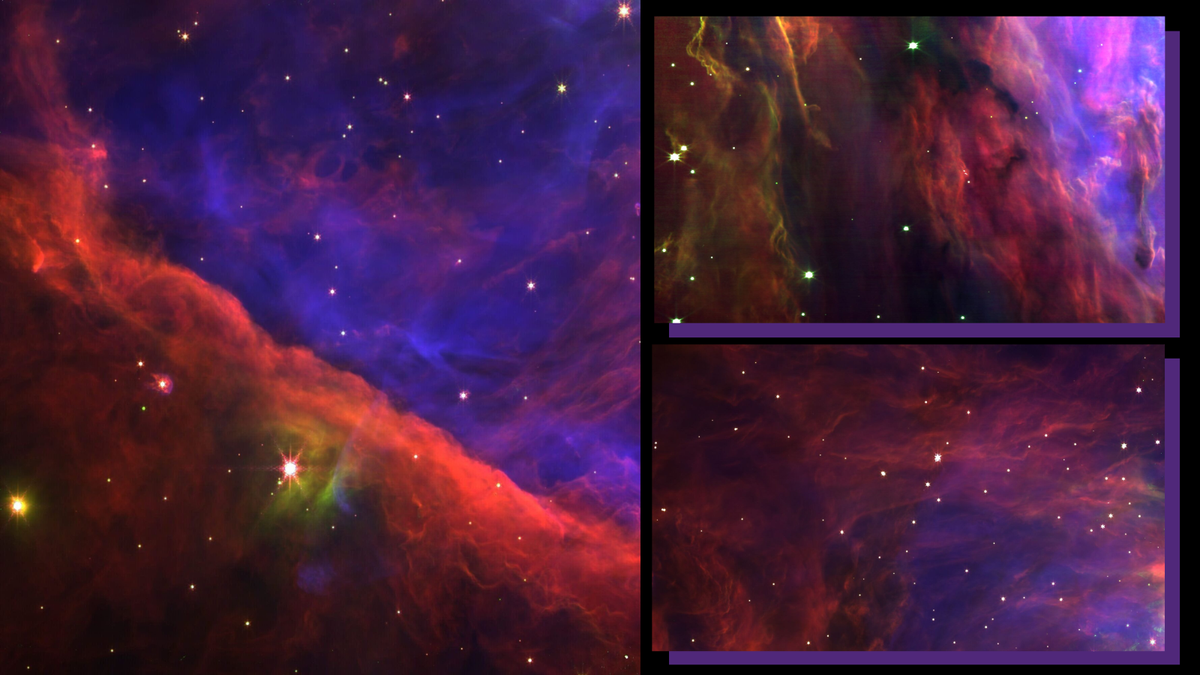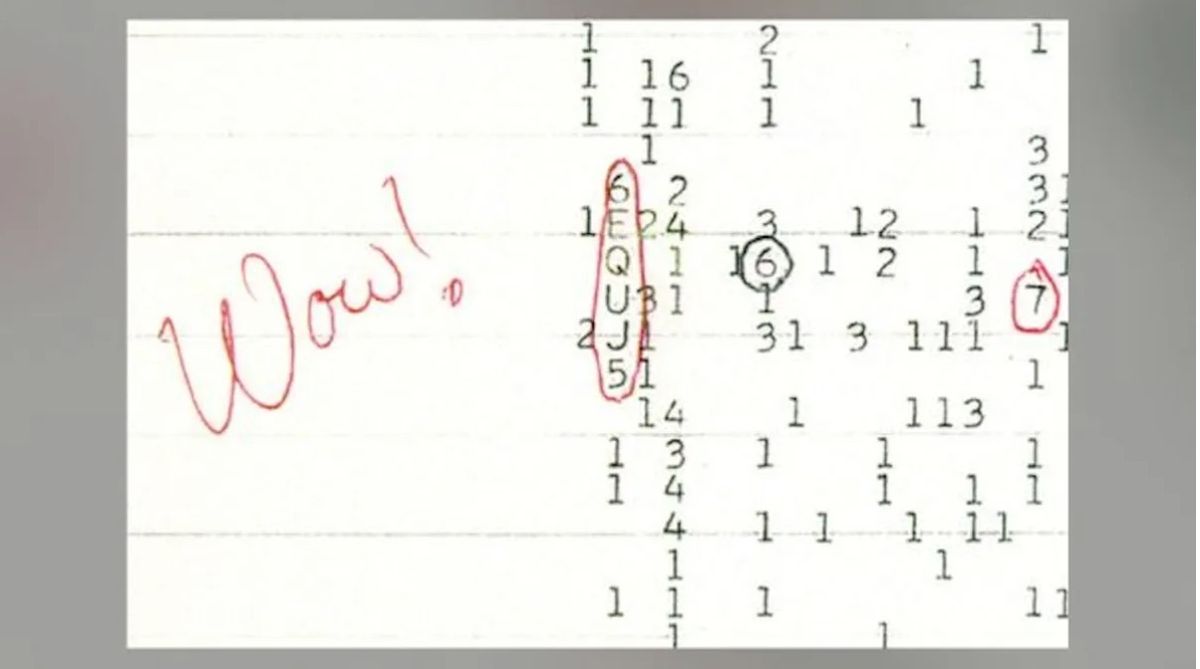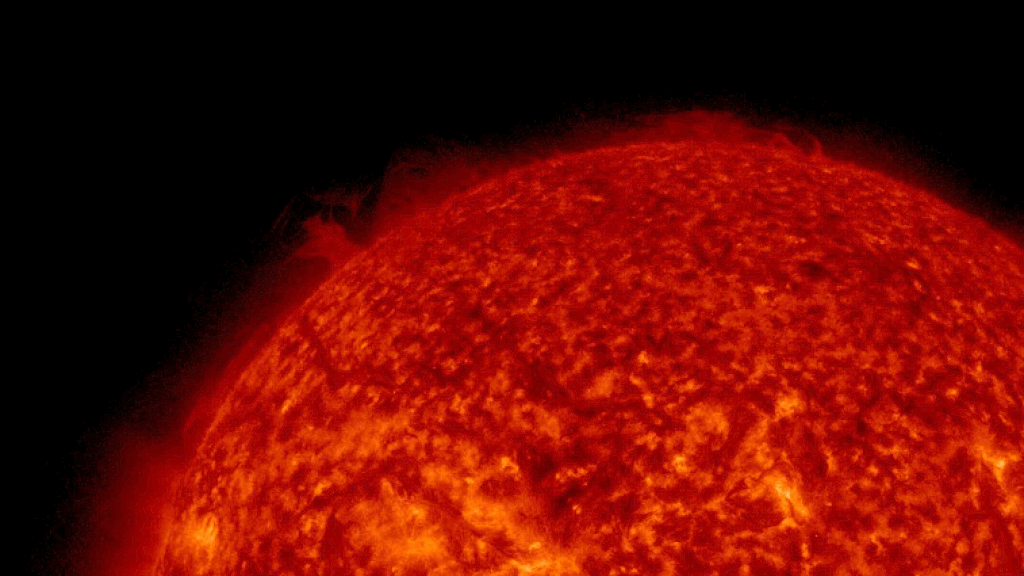The Enigmatic Beauty of the Orion Nebula Unveiled by the James Webb Space Telescope
The Orion Nebula, also known as “Messier 42” (M42), is a prominent celestial object located around 1,500 light-years from Earth toward the constellation of Orion. As a large star-forming region and stellar nursery, it represents a crucial site for the study of stellar birth and evolution within our cosmic neighborhood. Despite its historical significance and previous observations, recent images captured by the James Webb Space Telescope (JWST) have illuminated this nebula in an unprecedented and vibrant light, offering researchers a new perspective on its intricate features.
Discoveries Through Unprecedented Detail
One of the most striking aspects of the newly acquired images from the JWST’s PDRs4All program is the remarkable level of detail they provide regarding the structure of the Orion Nebula. In particular, the telescope’s focus on a diagonal ridge-like feature of gas and dust known as “the Orion Bar” has revealed intricate patterns and complexities within this star-forming environment. These images, beyond their aesthetic appeal, hold immense scientific value and present a wealth of data for astrophysicists to explore in depth in the years to come.
According to Els Peeters, an astrophysicist and principal investigator of the PDRs4All program at Western University, the quality of the JWST images is unparalleled, offering insights that could shape astrophysics research for decades. The exploration of this extensive dataset has already led to several unexpected and significant discoveries, underscoring the profound impact of these observations on our understanding of the Orion Nebula’s intricate dynamics.
The Messy Process of Star Formation
Star formation, a fundamental cosmic process, involves the collapse of overdense regions within vast clouds of gas and dust under the influence of gravity. These collapsed regions give rise to protostars, which are shrouded in natal cocoons composed of residual materials from their formation. Over time, protostars accrete additional mass until they reach a critical point where nuclear fusion ignites in their cores, marking their transition into main-sequence stars like our own sun.
The complexities of star formation, particularly in regions like the Orion Nebula, stem from the diverse masses and developmental stages of embedded stars, as well as the intricate interplay of physical and chemical processes at play. Peeters emphasizes the chaotic nature of star-forming environments, highlighting the multifaceted interactions that shape the evolving landscape of stellar birth.
Insights Into the Interstellar Medium
Central to understanding star formation within regions like the Orion Nebula is the study of photo-dissociation regions (PDRs), where ultraviolet radiation from young stars interacts with the surrounding gas and dust. The dynamic chemistry and physics of PDRs play a pivotal role in shaping the environment and driving the evolution of stellar nurseries such as M42.
The recent JWST observations have unveiled intricate details about the Orion Bar and its chemical composition, shedding light on variations in temperature, density, and radiation field strength across this star-forming region. By analyzing the spectrum of light emitted from the Orion Bar, researchers can decipher the chemical fingerprints of different elements present within the nebula, providing invaluable insights into its overall composition and dynamics.
Revealing the Mysteries of Polycyclic Aromatic Hydrocarbons
Further investigations by the PDRs4All team have delved into the emissions from large carbon-bearing molecules known as polycyclic aromatic hydrocarbons (PAHs) within the Orion Nebula. These complex molecules, abundant reservoirs of carbon-based materials in the cosmos, play a crucial role in our understanding of carbon’s role in the universe and the potential for life on exoplanets.
Studies of PAHs have uncovered the effects of ultraviolet radiation on these molecules, highlighting their resilience in harsh space environments and the alterations induced by stellar radiation. The JWST’s high-resolution observations have allowed researchers to witness firsthand the transformative impact of ultraviolet light on PAH emissions, providing unique insights into the chemistry and physics of these carbonaceous compounds.
Advancing Astrophysical Understanding
The comprehensive analysis conducted by the PDRs4All team has resulted in a series of groundbreaking findings, published across six papers in the prestigious journal Astronomy & Astrophysics. From elucidating the complexities of star formation to unraveling the mysteries of PAH emissions, these discoveries stand as testament to the invaluable contributions of the JWST in expanding our knowledge of the cosmos.
Through the lens of the JWST, the Orion Nebula emerges as a vibrant tapestry of cosmic creation, inviting astronomers and researchers to explore its intricacies and unlock the secrets of stellar birth and evolution. The unprecedented level of detail captured by this powerful space telescope opens new avenues for scientific inquiry and promises to shape the future of astrophysics research for generations to come.
Image/Photo credit: source url





